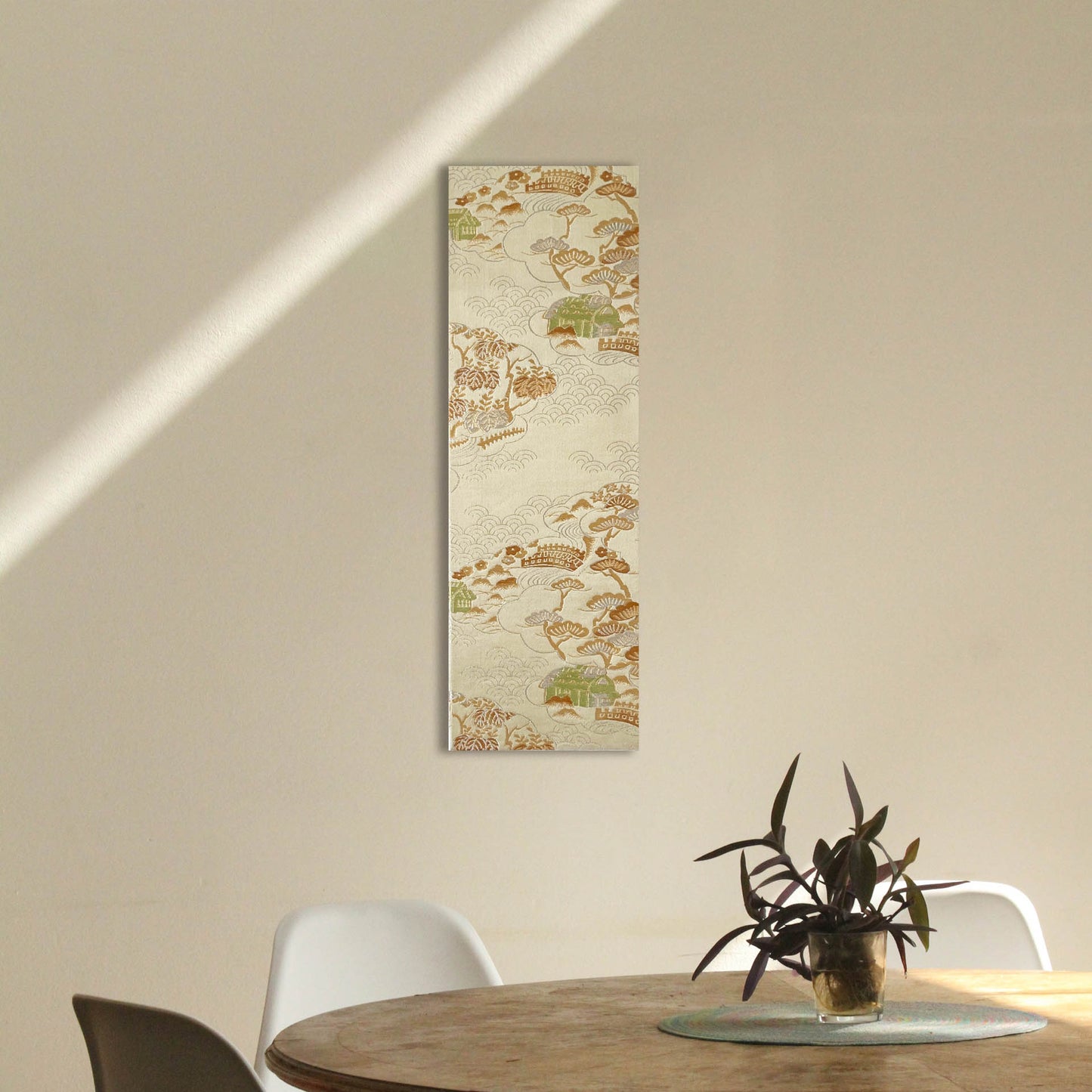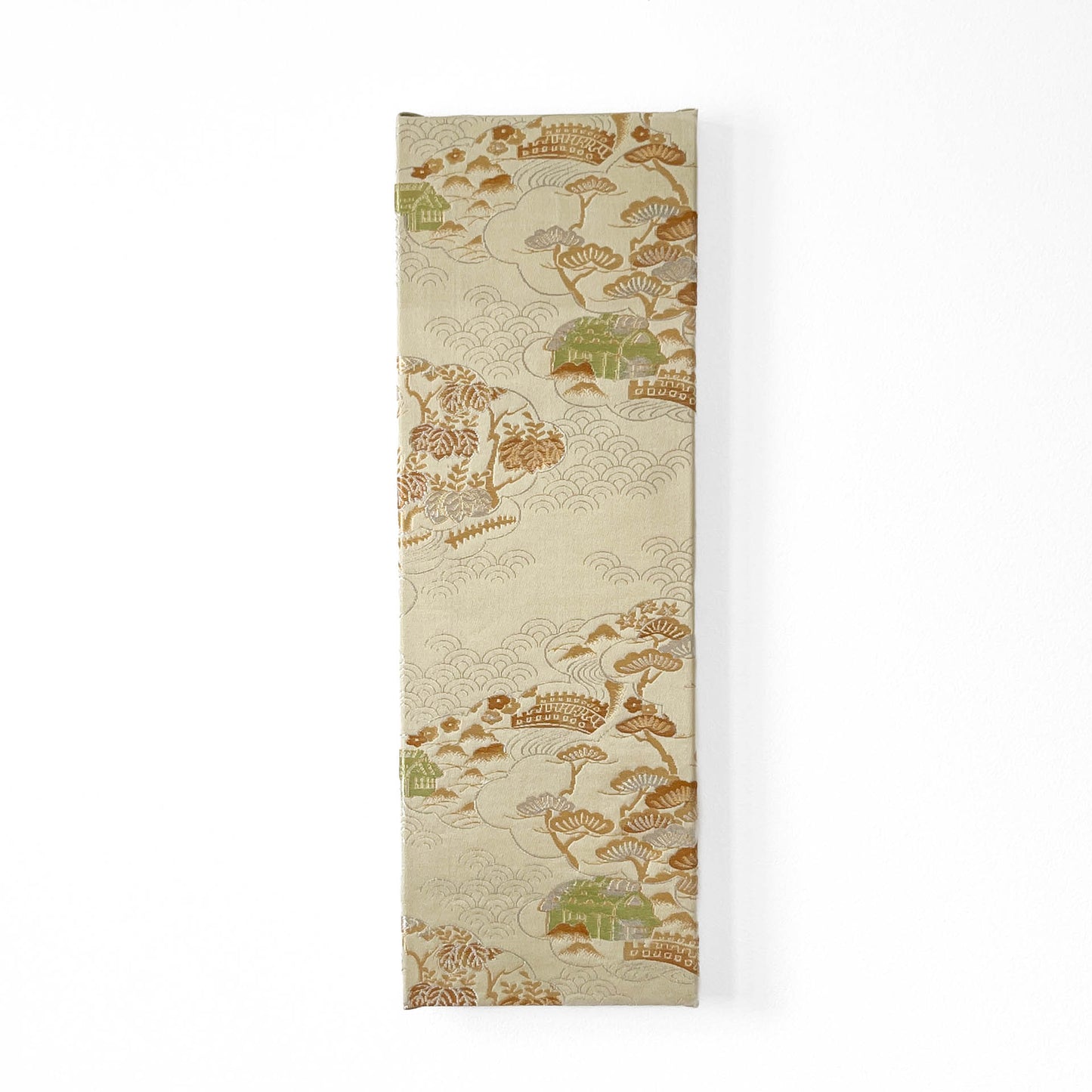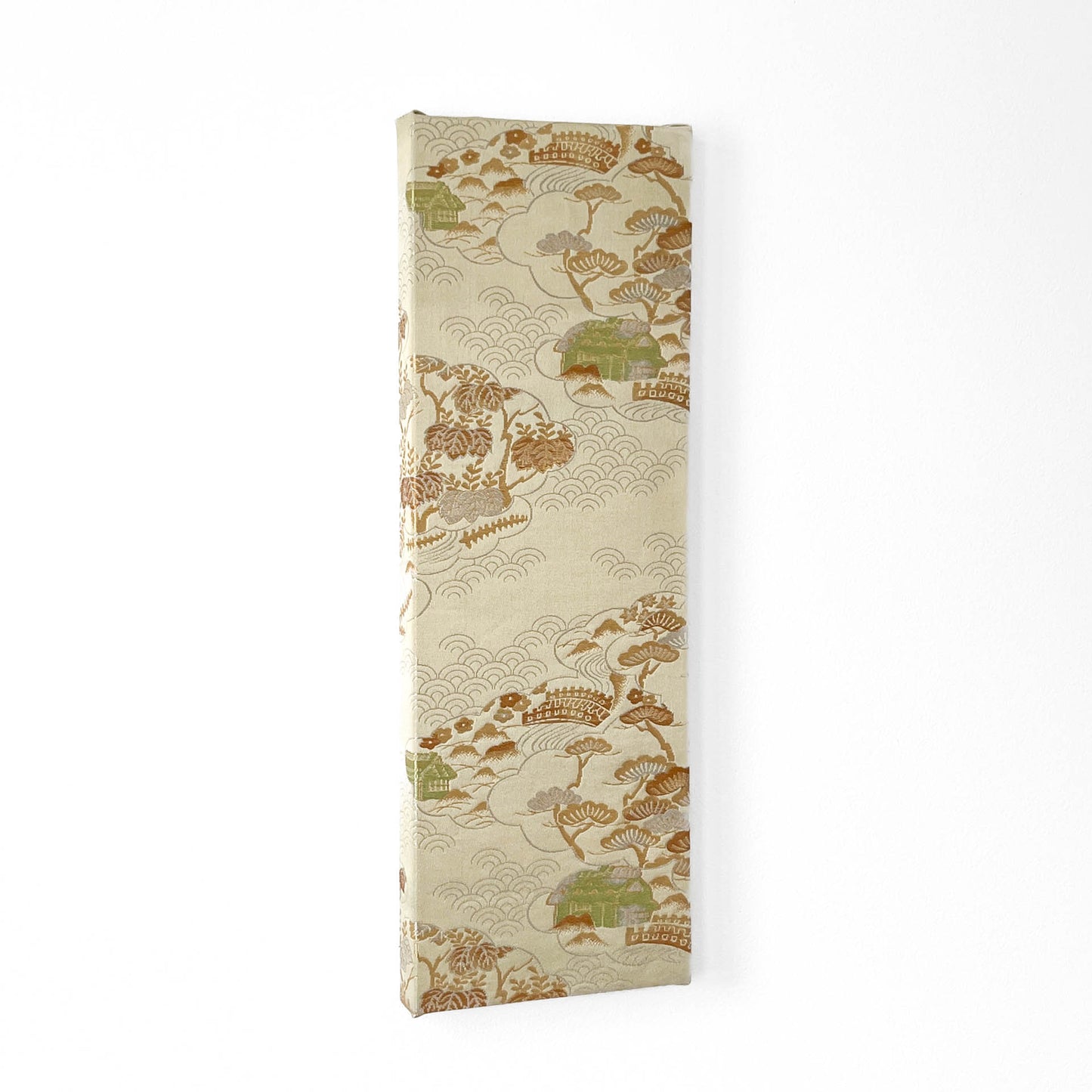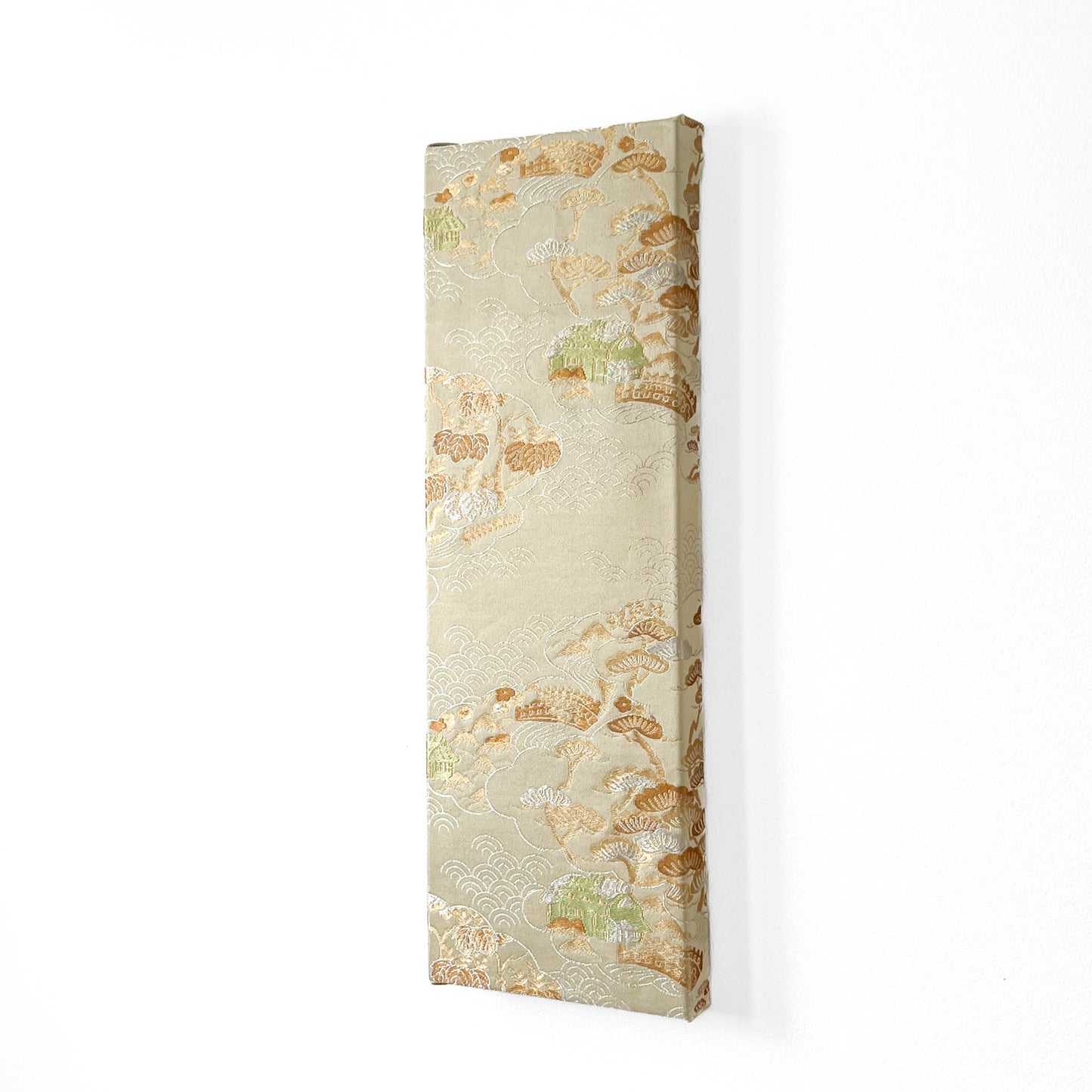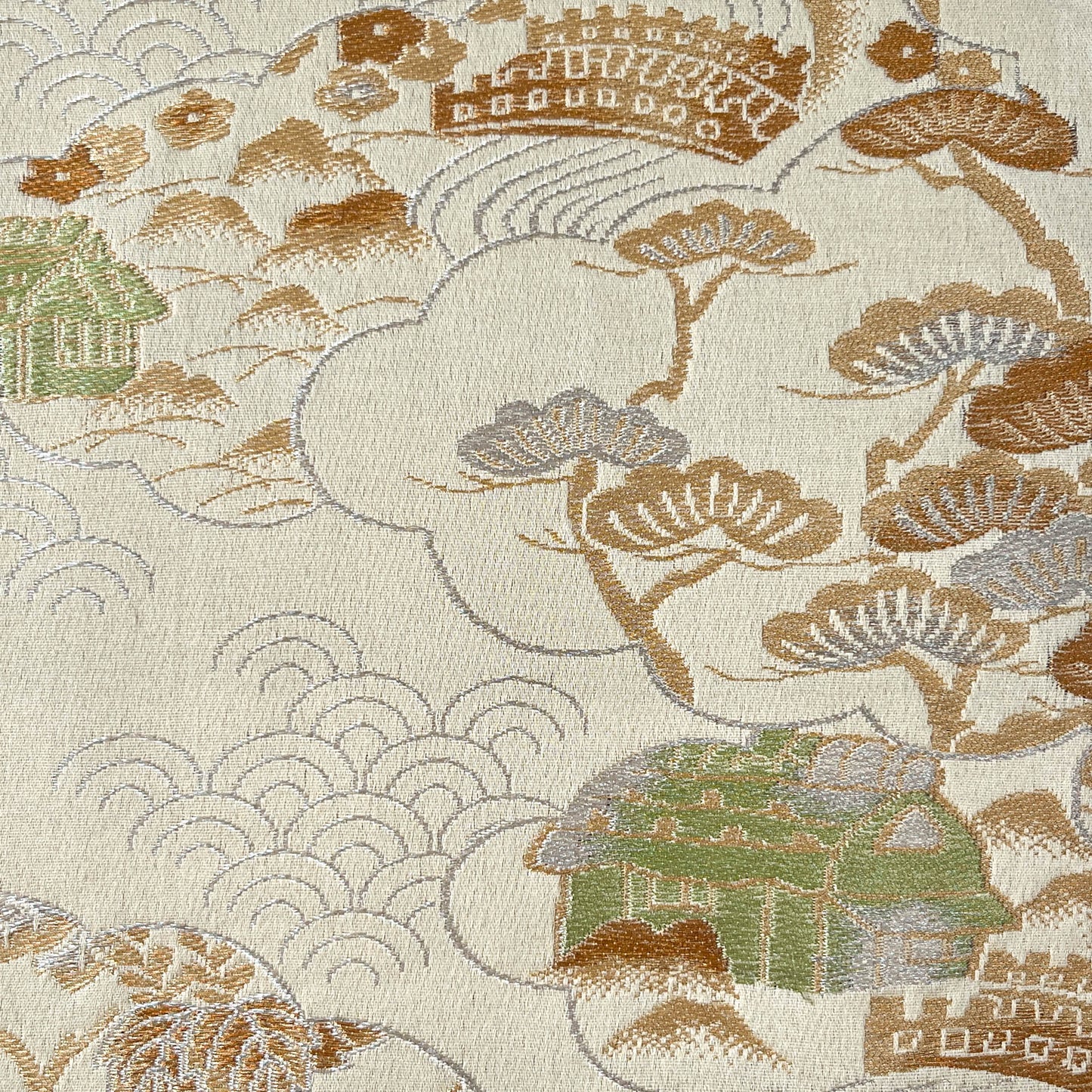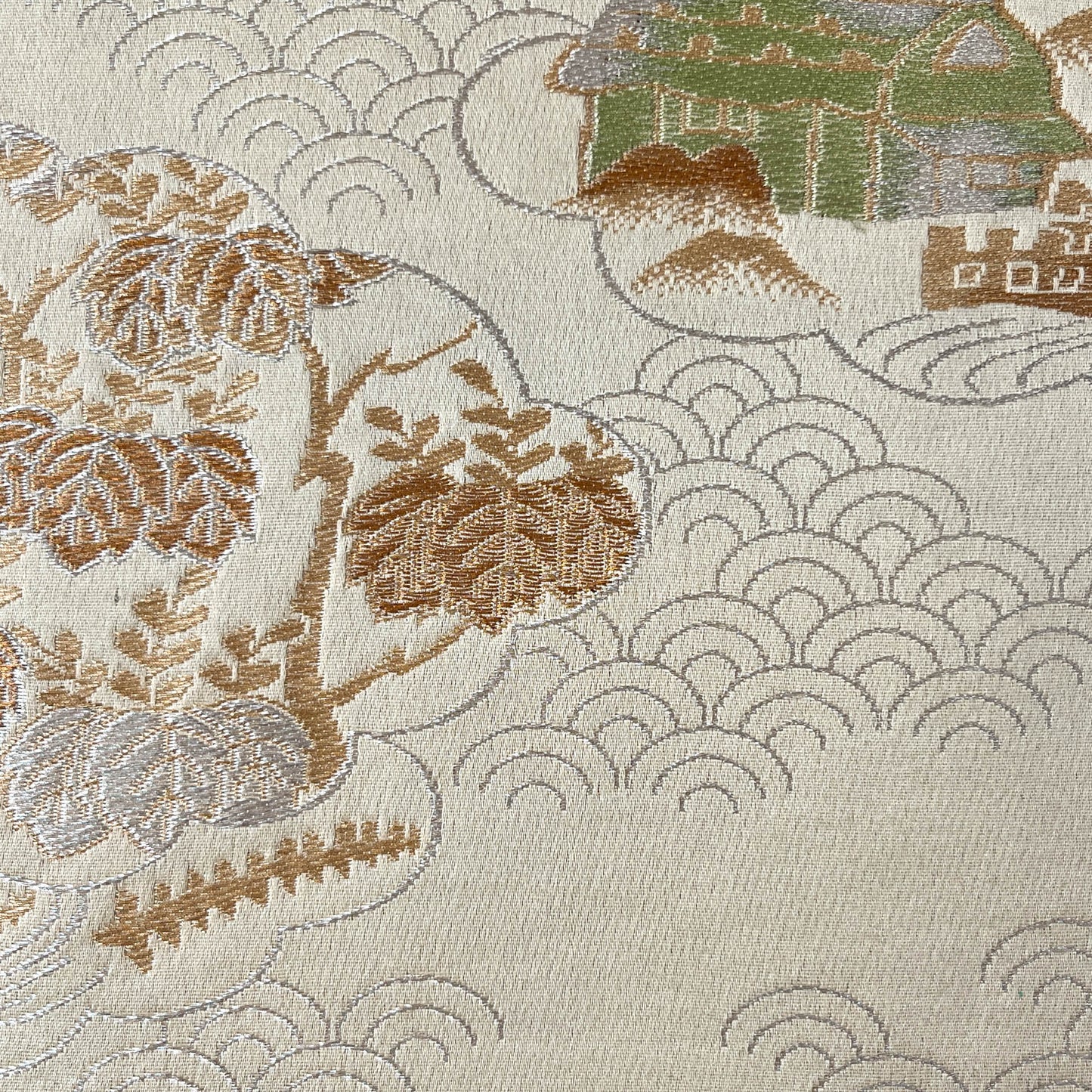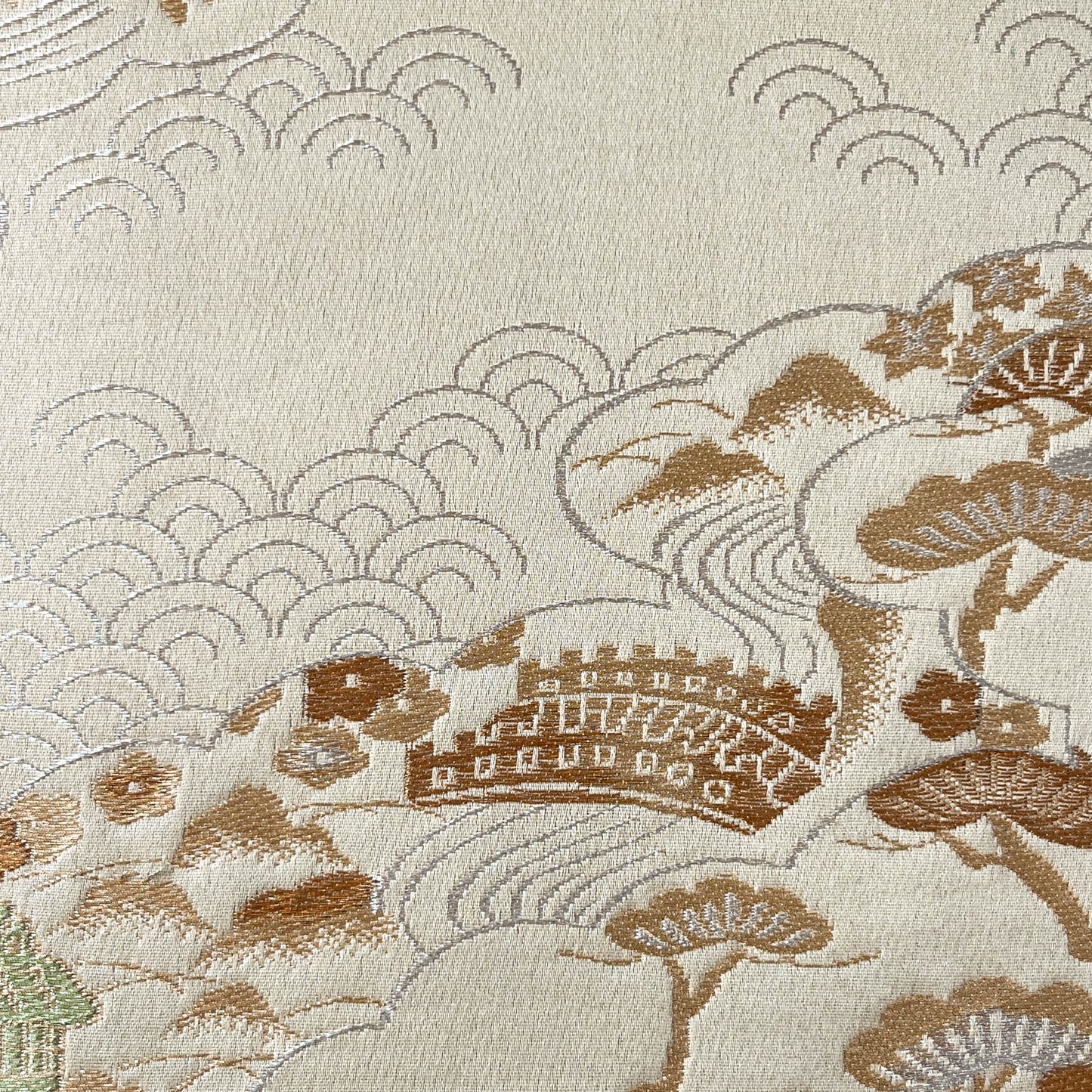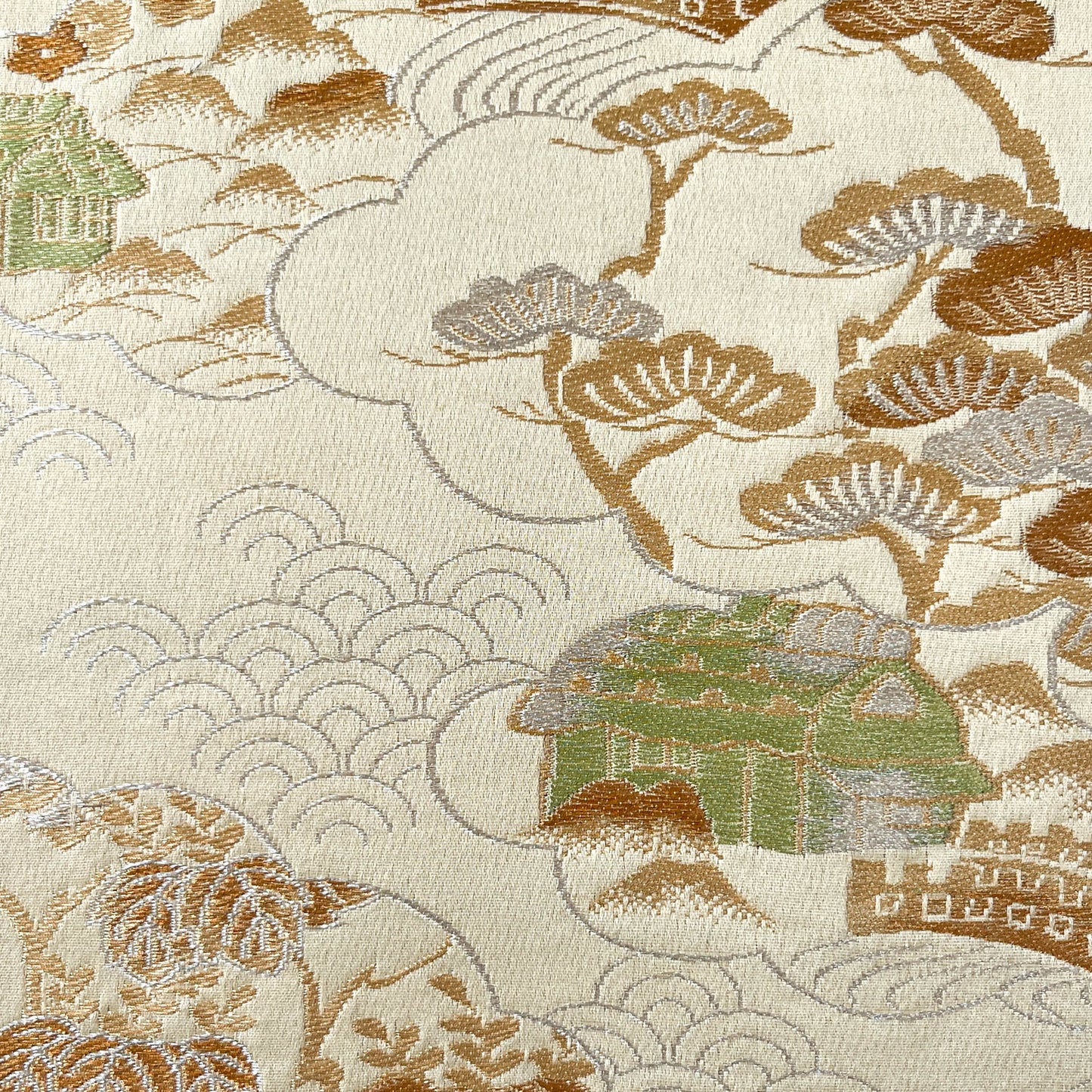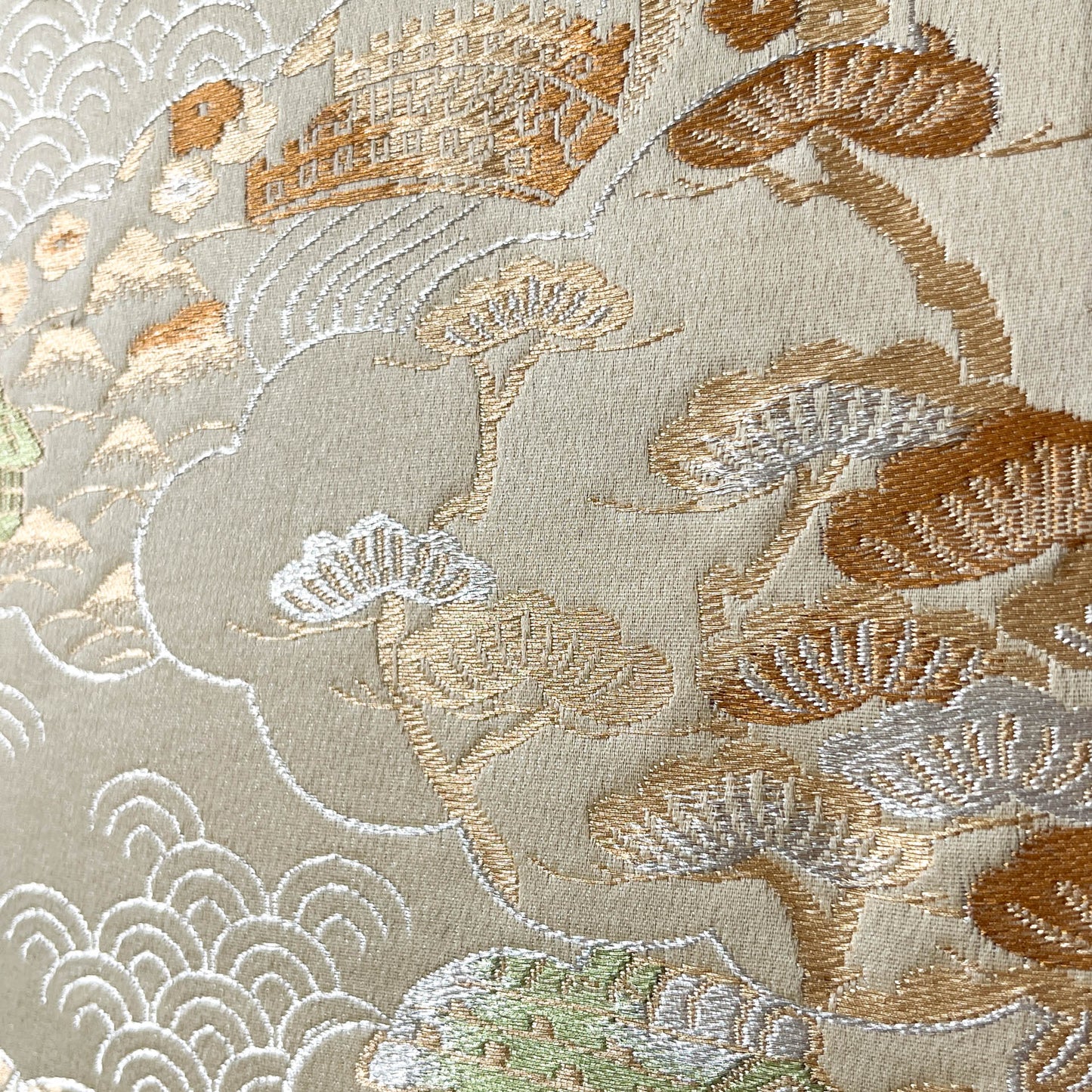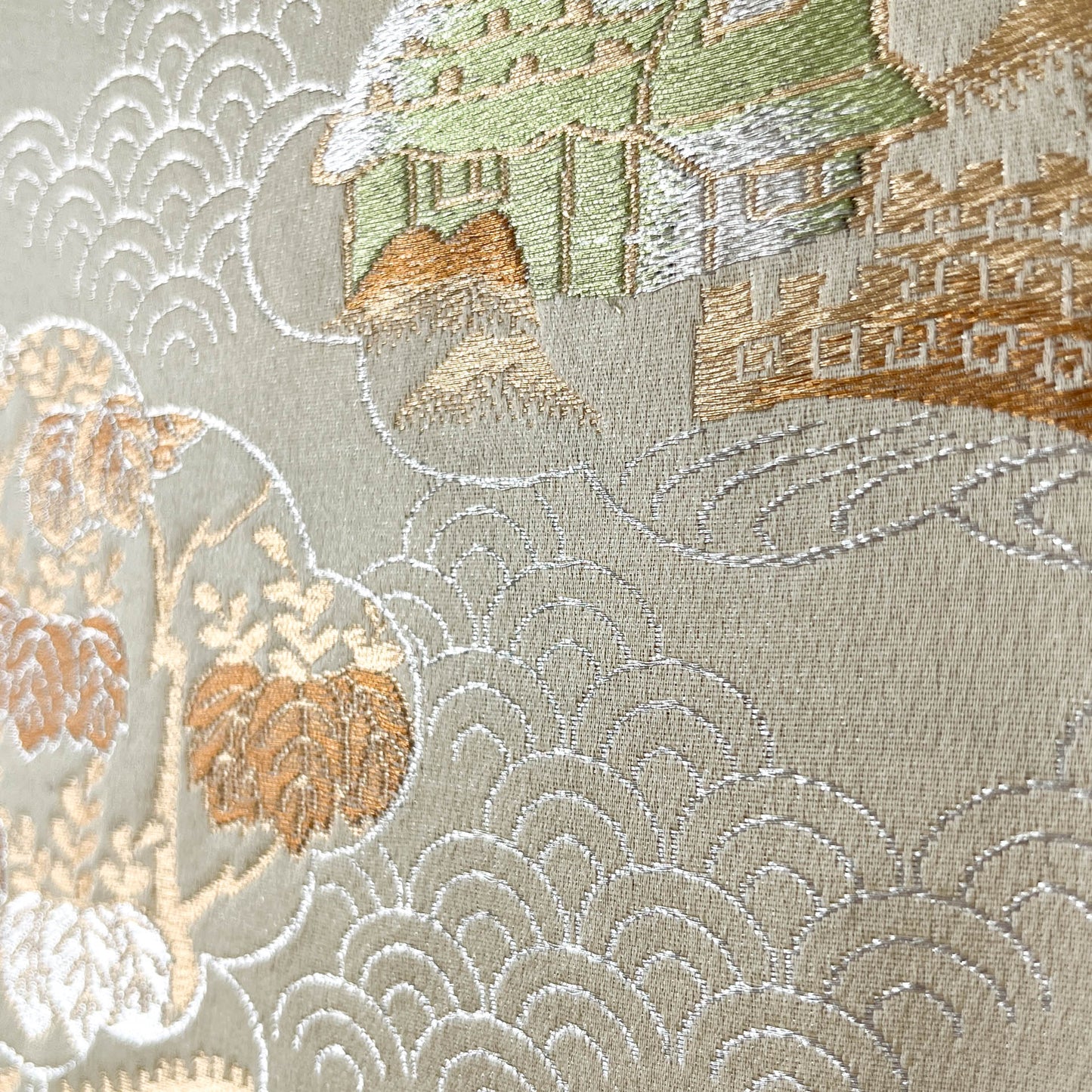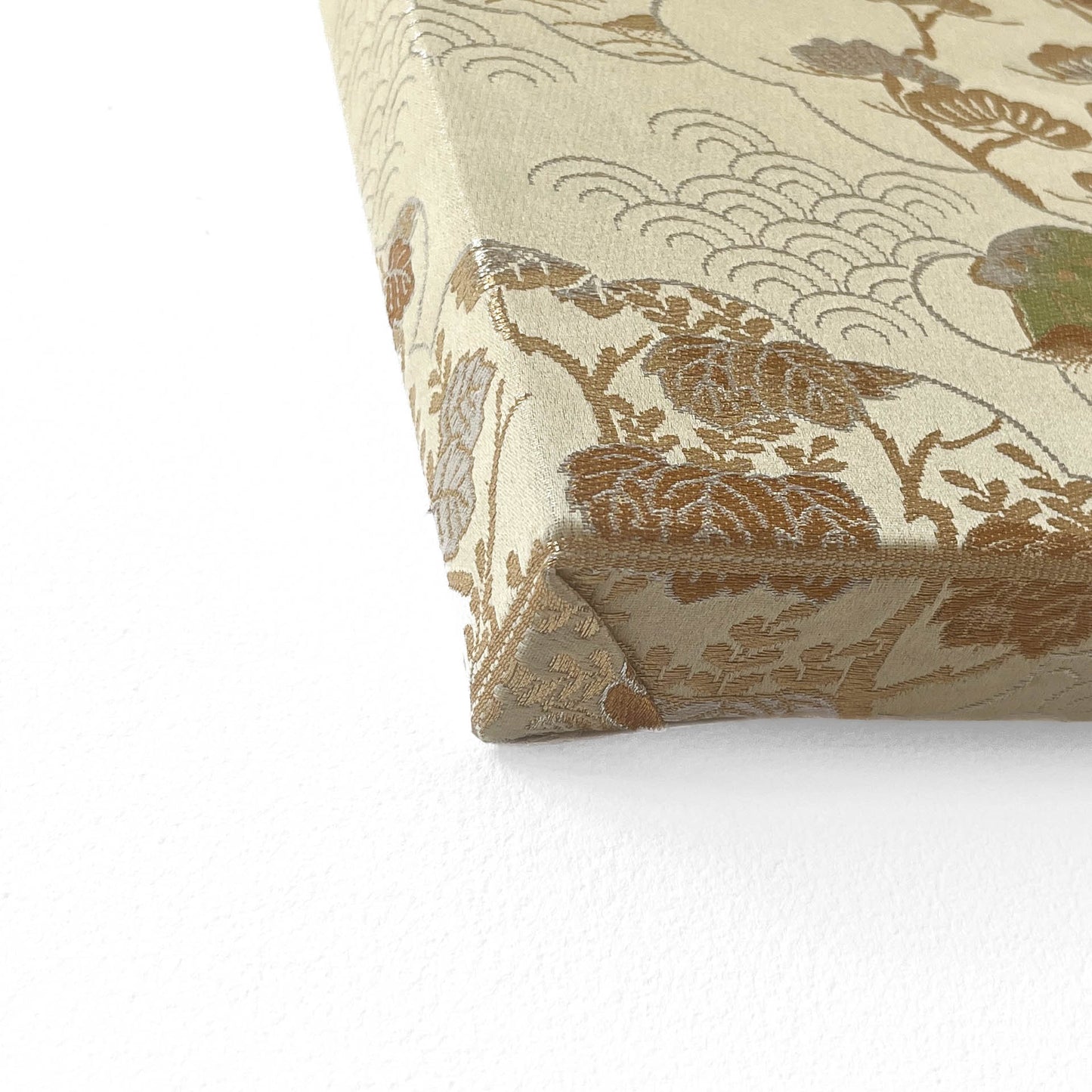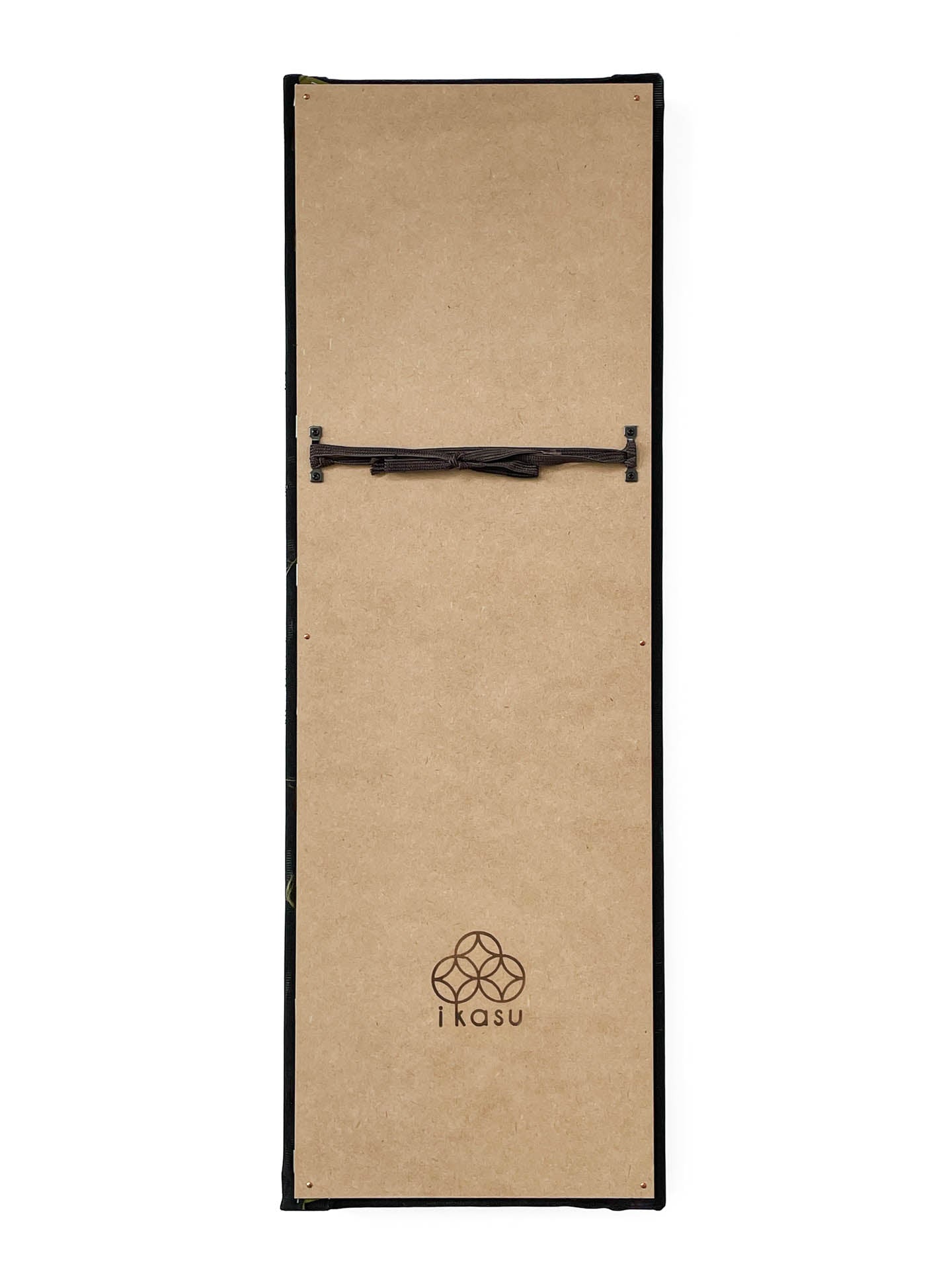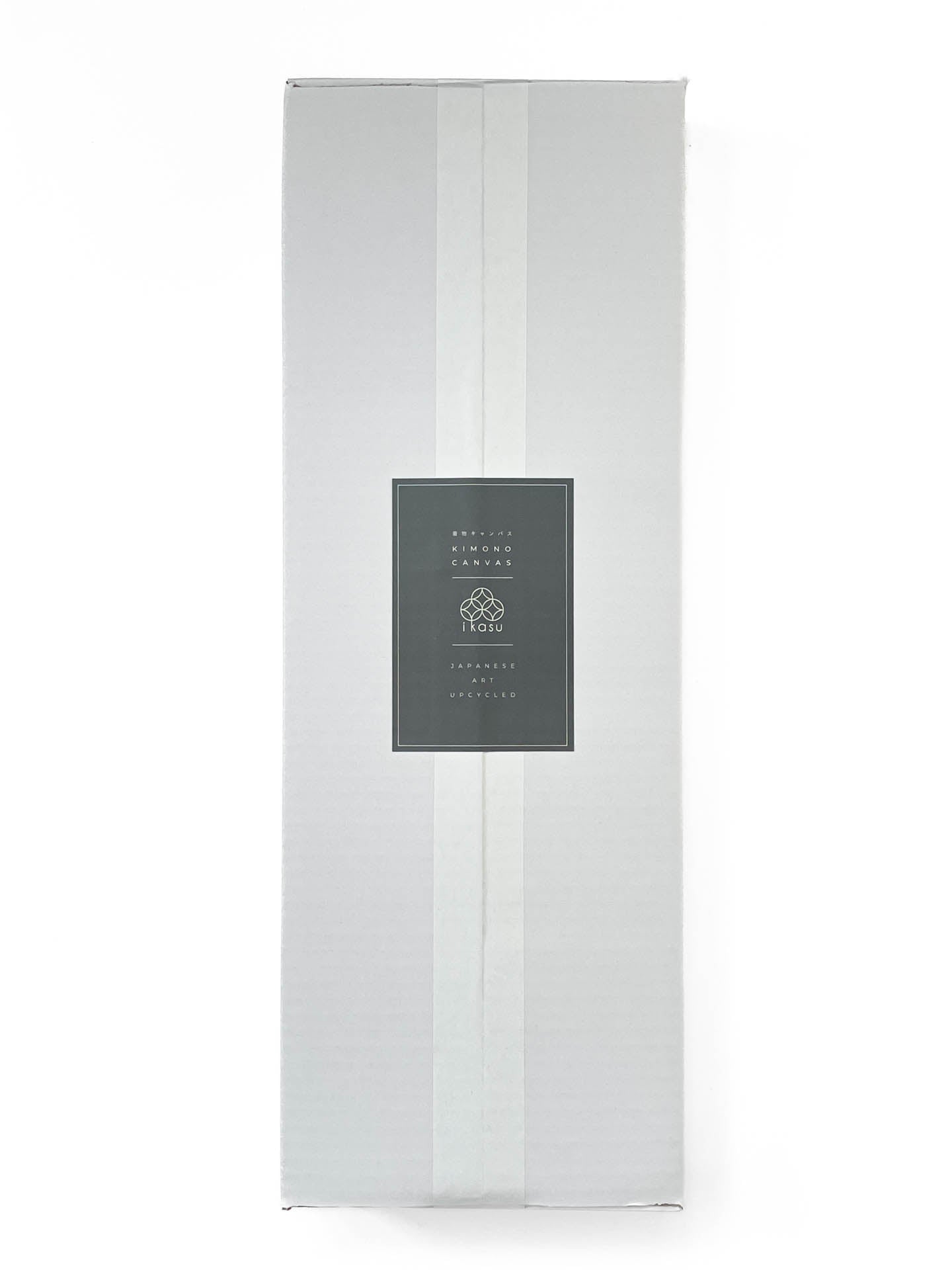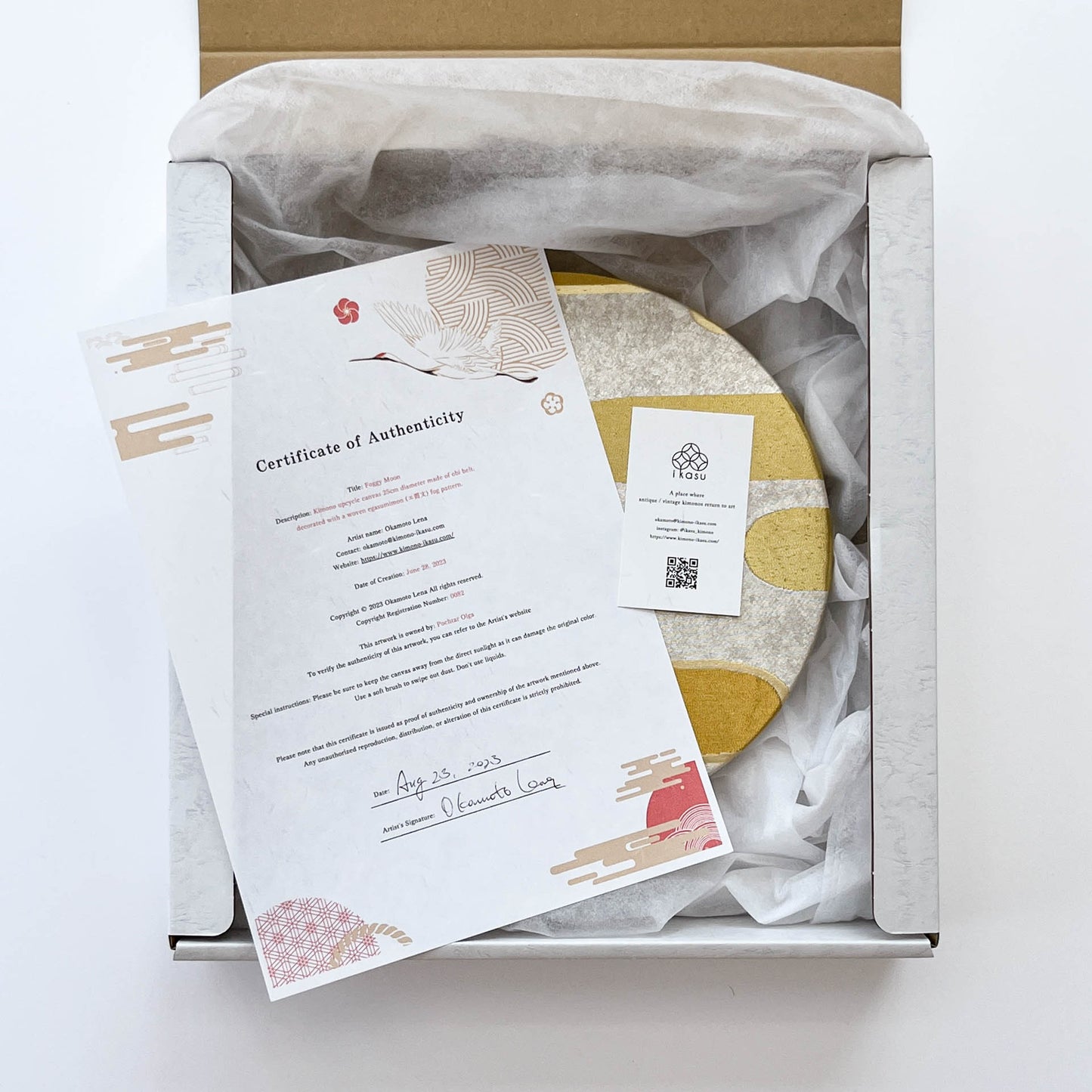Golden Landscape (long ver.)
Golden Landscape (long ver.)
無法載入取貨服務供應情況
Size
about 20cm x about 60cm x about 4cm
Materials
wooden frame, cotton linen canvas, pure silk
About this panel
This obi is a stunning example of traditional Japanese textile artistry. It showcases a waterside landscape using a visual technique known as "kumodori," where ocean waves are depicted in the shape of clouds. The presence of pine trees and paulownia motifs, both considered auspicious symbols, adds to the overall richness of the design.
Furthermore, the inclusion of the "Seigaiha" wave pattern and the intricate kumodori technique makes this obi a truly authentic and artistic masterpiece.
Explanation and meaning of pattern
The Kumodori pattern is a classical design where various motifs are framed within a cloud-like shape. Clouds have been a source of fascination for people throughout history, as they constantly change in shape and color, often seen as signs of upcoming big events or considered symbols of good luck. This is why cloud patterns, or Kumodori, are frequently used in celebratory occasions like weddings or a baby's first visit to a shrine.
Clouds are also believed to be the abode of dragons and gods, associated with their divine powers. The Paulownia pattern, on the other hand, is one of the quintessential Japanese designs. Its name, "paulownia," means "noble." It was introduced from China, where it was believed to be inhabited by phoenixes, symbolizing good fortune.
Historically, the Paulownia pattern was highly prestigious and exclusively used by the imperial family in Japan. Later, it became a symbol of power and was granted by the emperor to those in influential positions. Various family crests featuring paulownia motifs were created and adopted by military leaders.
In traditional customs, when a girl was born, a paulownia tree would be planted in the family garden. When she married and moved to her husband's family, a chest of drawers made from this tree packed with kimonos would be gifted to her. This tradition was symbolic of the wish for the child's healthy growth, as paulownia trees are known for their straight and rapid growth.
Description of fabric characteristics
Nishijin-ori is a traditional and prestigious textile produced in the Nishijin district of Kamigyō-ku in Kyoto, Japan. It is known for its high-quality craftsmanship and is considered one of Japan's most esteemed weaving traditions. Nishijin-ori fabrics are known for their intricate patterns, luxurious materials, and meticulous attention to details. They are often used in the creation of kimono, obi, and other fine textiles for formal occasions. The artistry and expertise involved in Nishijin-ori weaving have been passed down through generations, making it an integral part of Japan's cultural heritage and a symbol of exquisite craftsmanship.
Decoration Advice
The panel can be displayed on a table, etc. You will need tacks or nails to hang it on the wall. Because it is light, you can hang it with two ordinary thumbtacks. You can also lean it against an easel. Perfect for redecorating your room, as a housewarming gift, as a present, or as a souvenir for your loved ones! The product will be carefully wrapped and sent, so it can be used as a gift on the go.
Precaution
All the works are made from real kimonos, antiques and vintages. For this reason, the fabric may have traces of long-term use and minor fabric damages. - In case there are any scratches or stains, we always add a photo of the area on the item page, so please check before purchasing. Regarding precaution, cancellation and refund policy, please refer to the refund policy in the footer section of the site for information.
The last pictures in the gallery are the pictures of the reverse side of the canvas, the attachments and the package.
